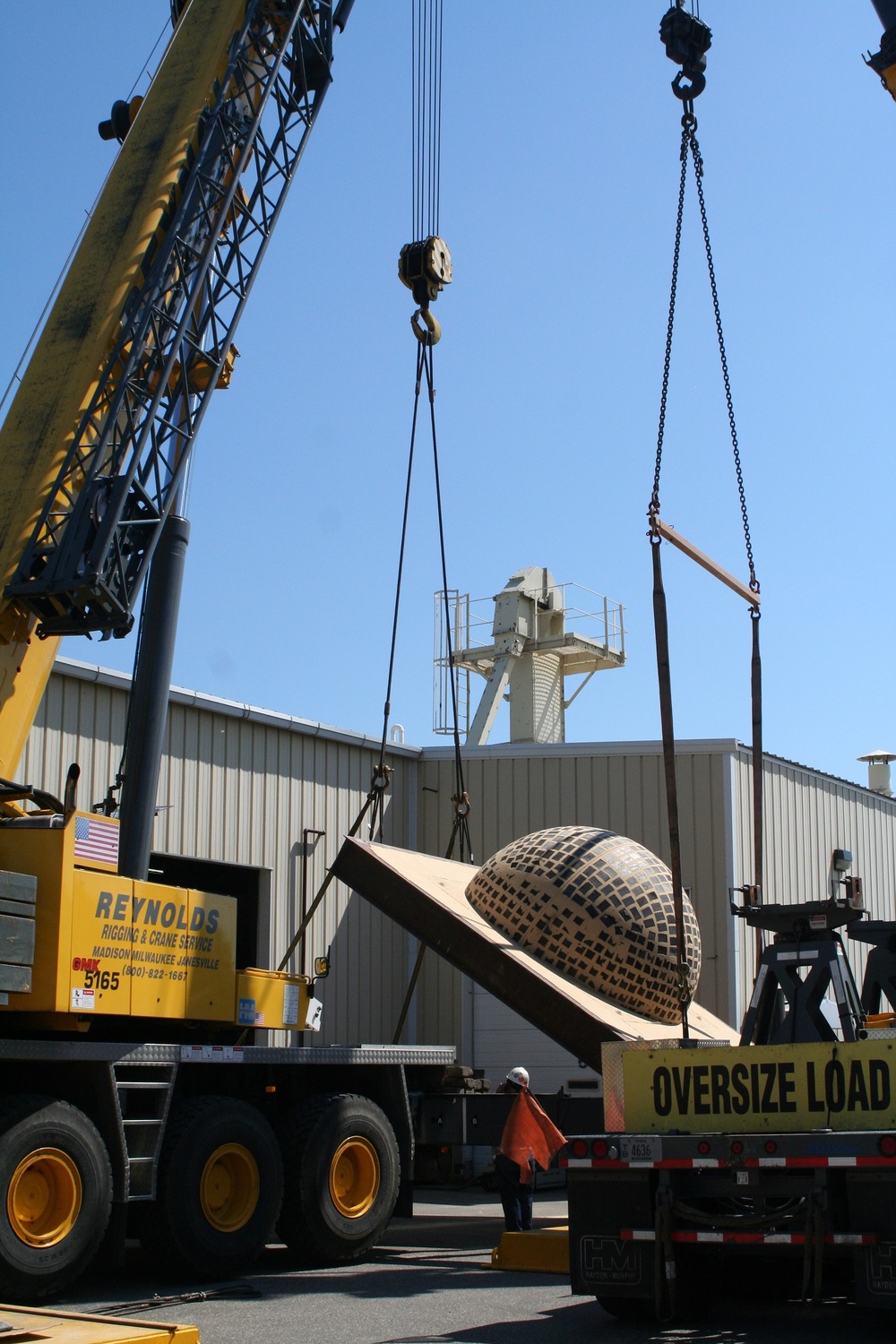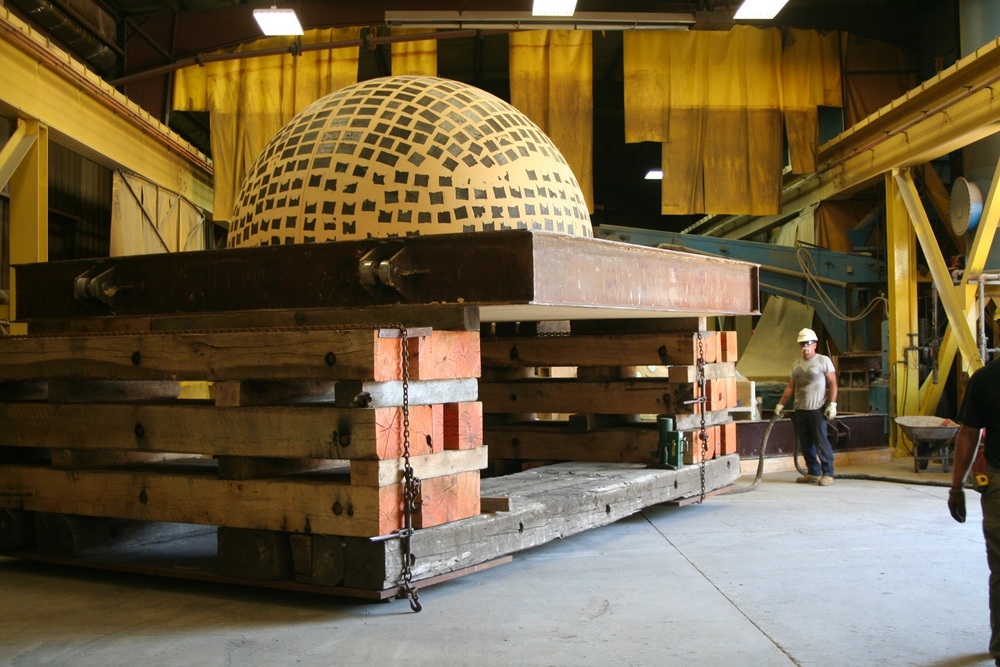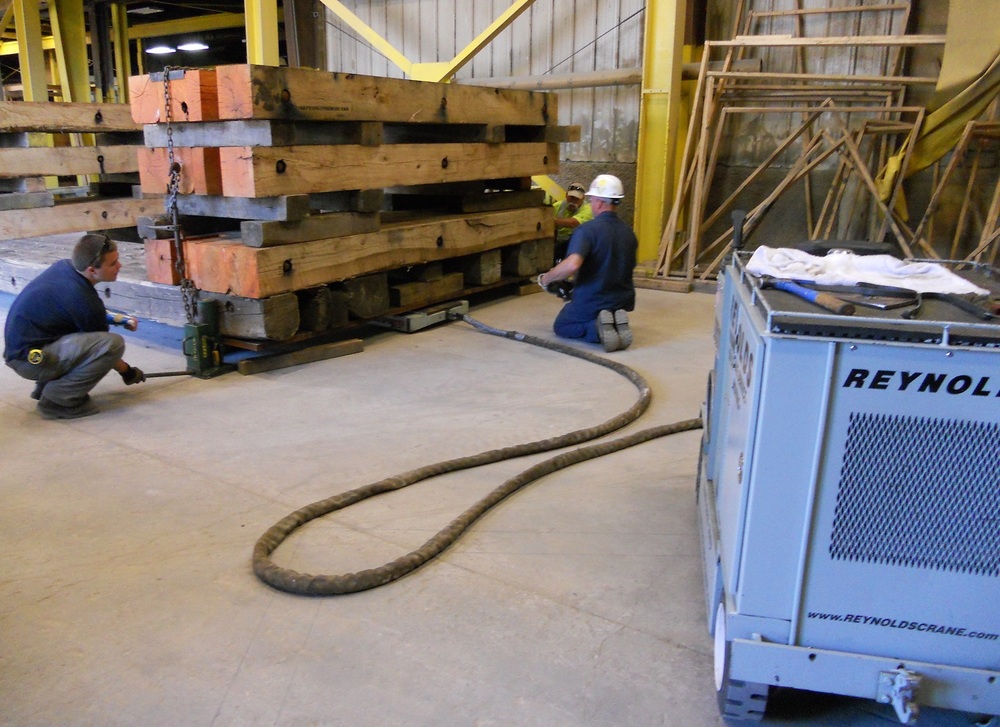Madison Plasma Dynamo Experiment
Portage Casting & Mold Phase
In the summer of 2011, Portage Casting and Mold created two 74,000 pound hemisphere molds made of sand and iron. We placed the molds, contained in custom wooden frames, onto a mobile crib using overhead cranes. Using our Traksporter positioned under one side of the mobile crib, we maneuvered the mold outside, where two cranes picked and rolled the mold. After turning the cast upside down, the 165-ton and 70-ton cranes placed the frame back onto the mobile crib, which carried the mold back into the building.
A few weeks later, we returned with two cranes to repeat the steps with the second dome, shaving two hours off our process time.
UW Plasma Physics Stage
In the spring of 2011, we were invited to participate in a wide-ranging project comprised of multiple companies around Wisconsin and Illinois. Our involvement included rolling 74,000 pound sand molds for Portage Casting & Mold, transporting the chamber from Metallic Bonds in Beloit to Madison, and installing the chamber for the University of Wisconsin’s Plasma Physics at Sterling Hall.
Placing the chamber in Sterling Hall required us to move the two halves vertically through the doorway of the building, lower them to a horizontal position in the entrance of the building, and then roll them into the range of the overhead crane. We used our Versa-Lift 40/60 with the boom to set the chambers and their transport crib onto the approach platform, and machinery dollies to roll them into the building in this position. With a chamber height of 127 inches and overhead obstacles beginning at 130 inches, the crib had to allow the bottom flange of the chamber to sit below the top of the machinery dollies, which are 6 inchs tall. Our skilled Iron Workers fabricated this crib out of steel, allowing for the safest possible transportation.
After clearing the overhead obstacles, two hydraulic gantries travelled over the hemispheres. The gantries cleared the ceiling by one inch, and were positioned over the picking eyes located on the halves. After connecting the picking eyes to the lifting apparatus using two 2-ton come-alongs, the hydraulic rams lifted the entire chamber off of the ground. Once the crew disassembled and removed the carrying crib, the gantries carried the apparatus to the opposite wall, within reach of a stationary gantry. In order to roll the chambers, the stationary gantry pulled up on the bottom of the chamber while the hydraulic gantry drove away from the stationary gantry.
At the pinch point of the roll, the top flange of the hemispheres cleared the ceiling by roughly one inch. In order to allow the flange to rotate this close to the ceiling, the hydraulic gantries were fitted with a rectangular lifting arrangement permitting the corner to pass above the lifting eyes. As the chambers finished the rotation into the horizontal plane, the flange cleared the walls by three inches. In addition, the stationary gantry required leg-extensions to prevent tipping from the side load. Reynolds’ Iron Workers fabricated the rectangle beam attachment, the picking eyes, and the gantry-leg attachments for this project.
Once flat in the horizontal plane, the gantries lowered the chambers onto machinery dollies. Due to spatial restrictions in the entryway, both sets of gantries had to travel with the chambers as they rolled down the hallway, where they could then roll into the final room. After reaching the picking range of the overhead crane, the UW Plasma Physics Department completed the process of placing the chambers onto their permanent stand.
More information about the Madison Plasma Dynamo Experiment.







